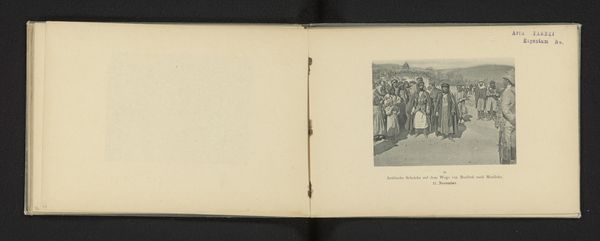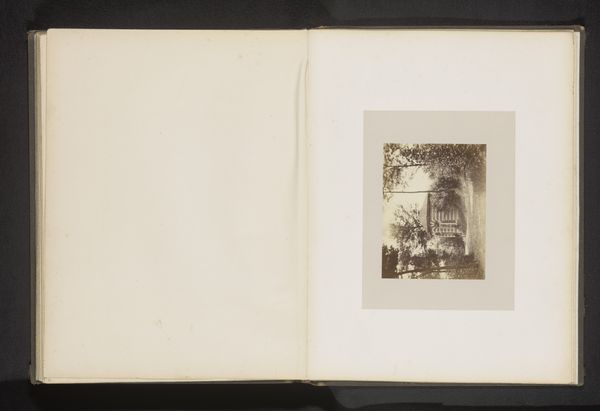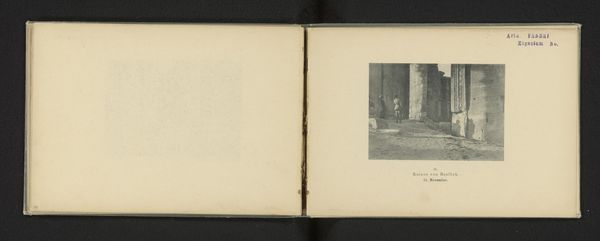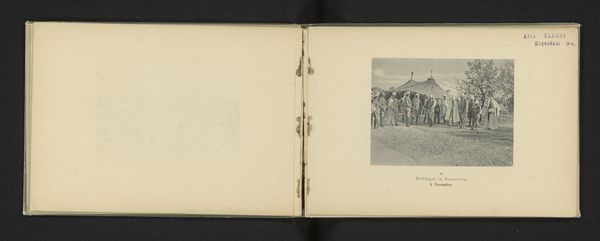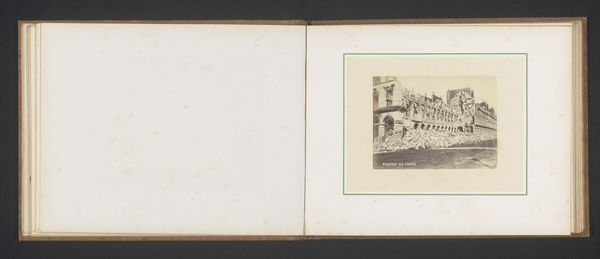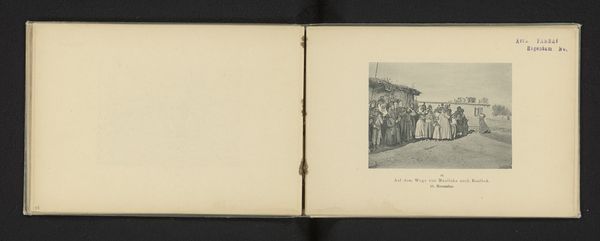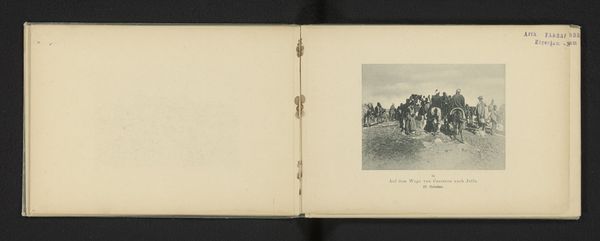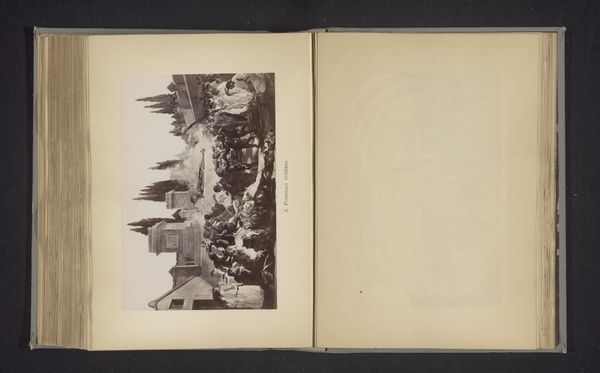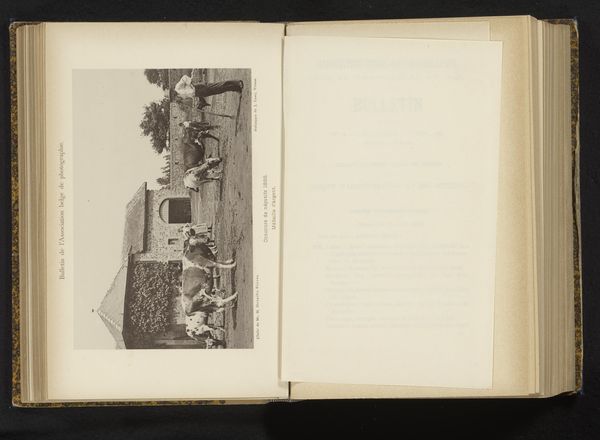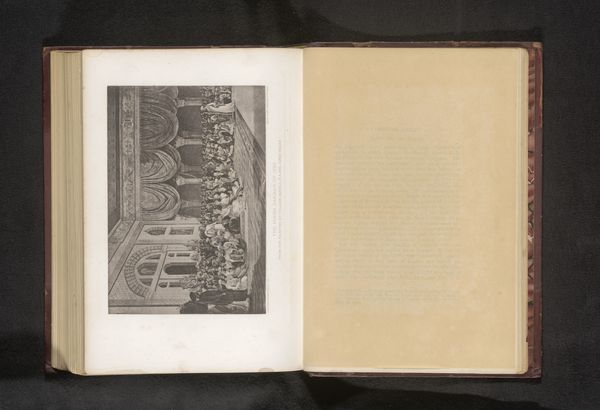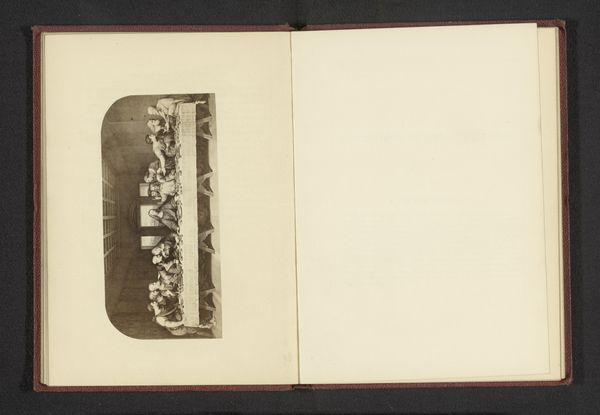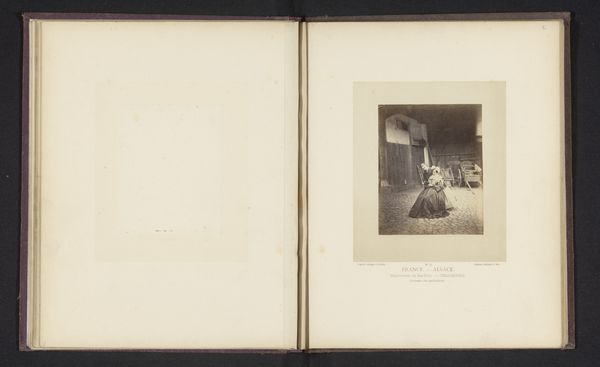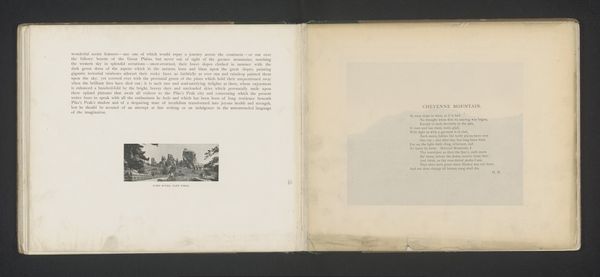
Dansers met zwaarden op een plein in Damascus, Syrië before 1899
0:00
0:00
drawing, print, paper
#
drawing
#
aged paper
#
homemade paper
#
narrative-art
#
paperlike
# print
#
personal journal design
#
paper texture
#
paper
#
orientalism
#
square
#
thick font
#
line
#
genre-painting
#
delicate typography
#
thin font
#
design on paper
#
small font
Dimensions: height 89 mm, width 120 mm
Copyright: Rijks Museum: Open Domain
Curator: Let’s turn our attention to this fascinating print entitled “Dancers with Swords on a Square in Damascus, Syria,” created before 1899. It’s an interesting depiction, caught within the pages of what appears to be a travel journal. Editor: It has a certain formality, doesn't it? The carefully rendered architecture creates a strong horizontal baseline, then those rhythmic arches provide visual stability. It makes the dancer, or dancers—I can't quite tell—feel poised, part of a calculated composition. Curator: Absolutely. Considering the orientalist style, the calculated composition also frames the scene to serve European perspectives and fantasies about the 'Orient'. It's important to remember that the power dynamics inherent in the gaze shaped how such scenes were represented. The "dancers with swords," while seemingly celebratory, also reflect Western ideas of masculinity and exoticism. Editor: I agree that a gaze is apparent, but note the placement of the figures within the square, contrasted by the backdrop of what appears to be the Old City. I can't help but wonder about the artist's intentions as a creator. Was the primary focus documentary, seeking an accurate portrayal, or was there a leaning toward the aesthetic possibilities in order and proportion, in line and texture? Curator: These observations aren't mutually exclusive, of course! By placing it in a travel journal setting, it suggests documentation, yes, but also personal reflection—the Empire’s influence as it seeped into personal narratives. And those "aesthetic possibilities" were often guided by prevailing ideologies and cultural biases. The artistry here lies in understanding both the depicted scene and the lens through which it's presented, so consider its creation and function within that power structure. Editor: A potent reminder that the beauty lies not only in the structure but the questions it raises. It truly adds layers to the work that may go unnoticed. Curator: Precisely. It's in wrestling with these contextual layers that the image truly finds resonance with us today, so the power in observation is only truly realized when observation includes reflection on historical awareness.
Comments
No comments
Be the first to comment and join the conversation on the ultimate creative platform.
